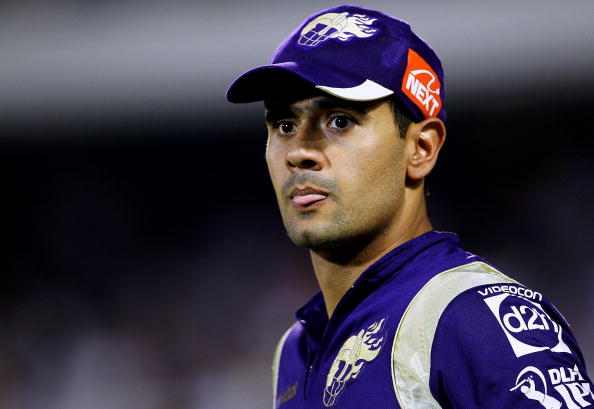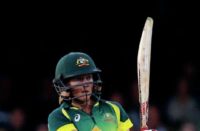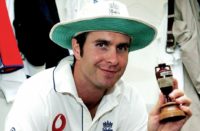Tim Wigmore finds a parallel between soccer coaches in the 20th century and their modern day cricketing brethren
In Mister, Rory Smith tells the story of how English football coaches gave the game to the world at the start of the 20th Century. England served as a football missionary, sending energetic and passionate coaches abroad to spread the game and develop skills.
Now, 100 years on, English sport is again performing the missionary role – but, this time, for cricket. In the county game, there are only 18 roles as head coach – and many times the number want to coach. Of course, there are jobs as specialists, assistants or coaching the second team, but even these are scarce, and there is nothing quite like the experience of leading a side.
So English coaches looking to get into professional coaching, or stay there, are increasingly turning to the Associate nations. Jobs coaching here have never been more attractive: the standard has never been higher, and the salaries countries can offer coaches has never been greater, even if it is a world away from what is the norm in Full Members.
And as the image of Associate cricket has been transformed, and interest risen, working for a leading Associate often serves as a gateway to other jobs. Just look at Ireland’s last two coaches. Adi Birrell, who coached Ireland to their victories over Pakistan and Bangladesh in the 2007 World Cup, is now South Africa assistant coach.
His successor, Phil Simmons, presided over eight years with Ireland masters of all they surveyed in Associate cricket, and was then rewarded with the West Indies job. Politics means he is no longer there, but Simmons still used his experience to lead West Indies to the World T20 crown in April.
And Mike Hesson, New Zealand’s coach for the last five years, earlier coached Argentina and Kenya. Though his Kenya stint ended after 11 months, with Hesson fearing for his family’s security after they had fallen victim to an attempted car-jacking and a grenade exploded near their house in Nairobi, he has spoken about how the experience helped his development as a coach.
“I loved it and loved the players – a really good group of guys, really keen to get better. It’s a struggle in terms of facilities and there’s quite a small playing group, so you had to make the most of everything you had and had to be adaptable,” he later reflected.
“Sometimes in international cricket you forget where you’ve come from and you forget how hard it is for players at different levels to push their case. You have to be creative in how you train – there’s no point in having excuses, you just have to try and find ways.
“I’ve been lucky enough to work in different countries around the world and been taken out of my comfort zone many times. For any coach, if you want to challenge yourself you have to make yourself really uncomfortable, and I certainly did that travelling to Argentina and Kenya and learning different languages. Those sort of things help to evolve you as a coach.”
Coaches of top Associates have the responsibility of leading their teams, including against Test nations, with budgets and support staff dwarfed by the Full Members. As Hesson attests, it amounts to an intensive grounding in the international game, and fine preparation for a future job with a Test team or, failing that, county cricket.
But coaching an Associate is far more than just a stepping stone; it’s also an intense, challenging and rewarding job in its own right. Perhaps, it’s also more rewarding than coaching a Full Member, because coaches can make more of a tangible difference improving a player’s game.
More and more Englishmen are realising as much. Simon Cook has successfully coached Hong Kong for a year, after previously working as an assistant. In the inaugural Desert T20, the tournament for eight leading Associates which begins on Saturday, Cook will encounter two other English coaches: Owais Shah, for the UAE, and Chris Adams, for the Netherlands. For now, both positions are temporary.
The two are at different stages of their careers. Shah is starting and says coaching is “a little bit” weird after playing. Adams, meanwhile, is looking to rebuild after a mixed five years as Surrey coach, which ended in 2013. He has been involved as a consultant with the Netherlands for two years, and has been widely praised by the players.
“It would be hard to overstate the influence he’s had,” says captain Peter Borren. “He has had a real positive impact on Anton Roux’s coaching [Roux left in August], my captaincy and also on the individual games of the players.”
But it seems Adams does not want to relocate to the Netherlands – he pulled out of a job with Cricket Ireland last year because he wanted to remain in Sussex – so, although the job could probably be his if he wanted it, the permanent job as head coach might go elsewhere. One strong candidate is another man familiar to county fans: the Scot Dougie Brown, newly available after his stint with Warwickshire ended.
The teams coached by Adams and Shah are at very different junctures. UAE are rebuilding after a spate of retirements, which means Shah will be afforded some time if there is evidence of young players coming through.
The UAE’s performances against the England Lions, in a three-match 50-over series last month, highlighted the state of the team. While the UAE bowled well and built a decent platform in their top three, they repeatedly collapsed thereafter – most ignominiously from 63-1 to 90 all out in the second game.
Shah believes more expertise is needed if the UAE are to improve. “The amount of quality coaches in UAE are limited compared to what we have in England,” he said recently. “The enthusiasm from the players to get better and become professional is there. The biggest thing is they’ve all bought into doing the training day-in, day-out, the behavioural stuff, and the idea they’re ambassadors for the country. They’re keen to learn and take it all on board.”
Netherlands, meanwhile, are a well-oiled machine, probably with less need for technical coaching than the UAE.
When all their players are fit and available, they could legitimately claim to be close to the world’s 10th best T20 team. Indeed, they should have beaten Bangladesh, rather than suffer an agonising eight-run defeat, in the World T20 in March, and would have gone through to the Super 10s had they won.
Their problem is they desperately need more matches; that is true for the UAE, too, but less so, largely because so many national and representative teams play or train in Dubai.
Playing in the Desert T20, the Associates’ T20 tournament, in the UAE in January, represents a start. But if Dutch cricket is to advance, it requires far more fixtures.
Adams and Shah have been drawn against each other in the Desert T20, which begins on Saturday. It is an intriguing and unlikely match-up between former England internationals. And it could be a harbinger of things to come, as the next generation of English coaches – the Misters of the 21st Century – increasingly pursue opportunities in the Associate world.
This piece originally featured in The Cricket Paper, January 13 2017
Subscribe to the digital edition of The Cricket Paper here















